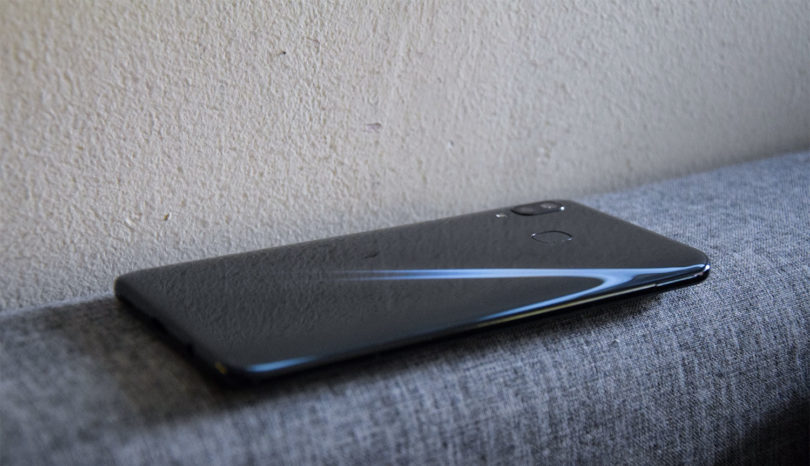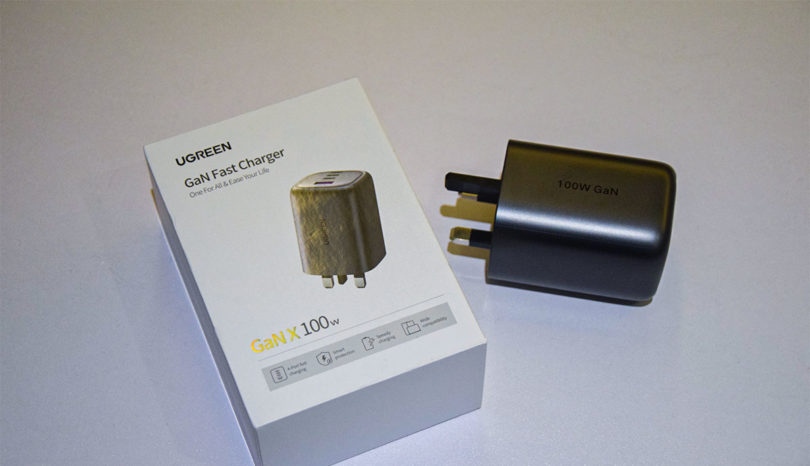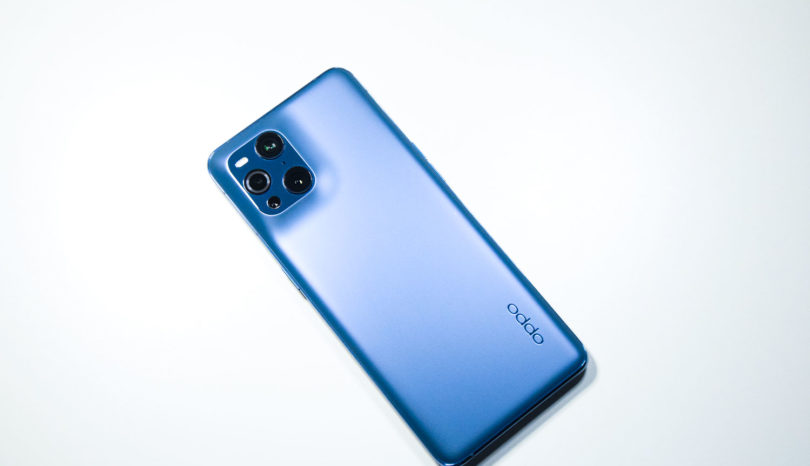Introduction
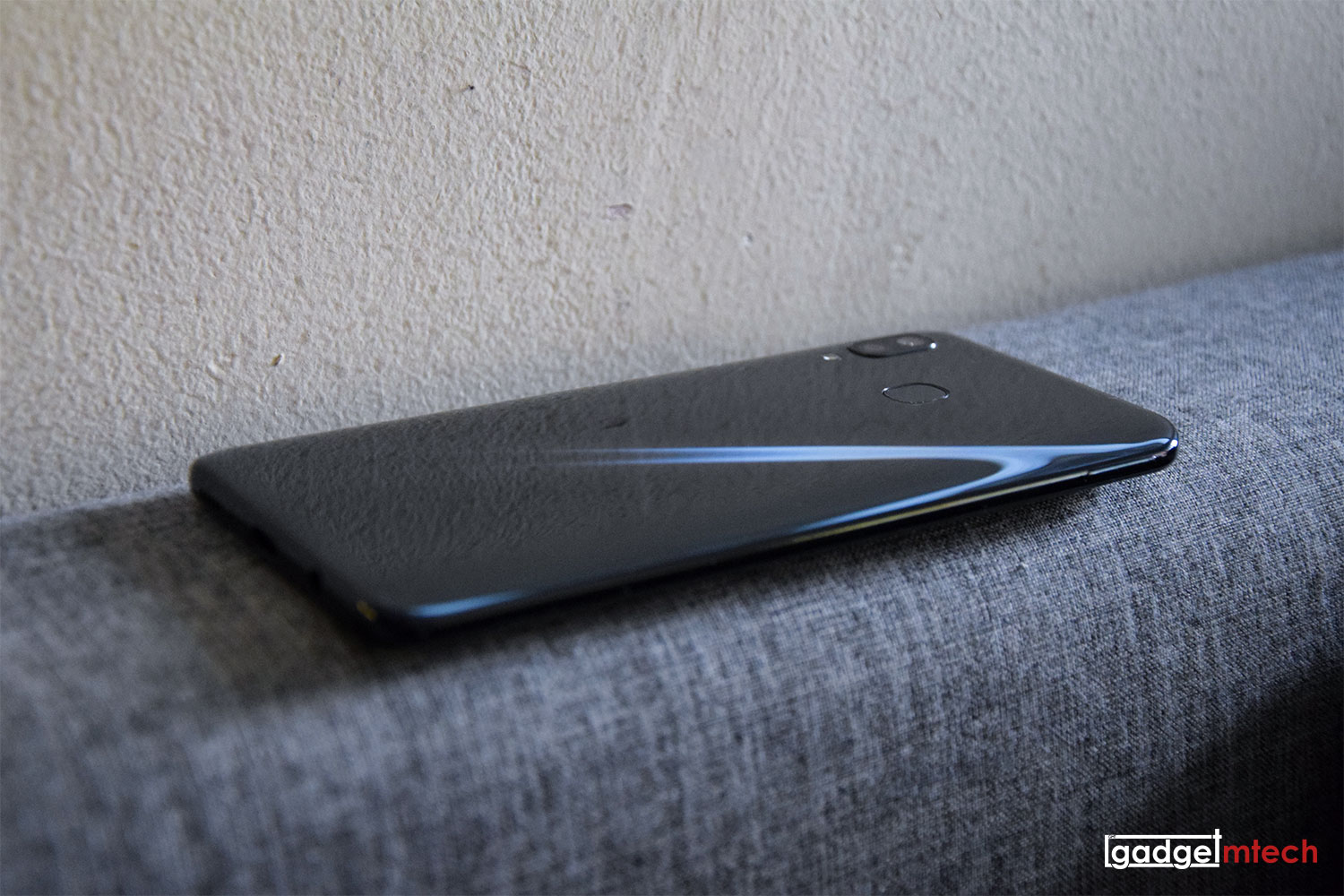
The Samsung Galaxy A30 is the company’s latest affordable device, which is one of the latest A-series devices looking to reclaim the affordable smartphone segment. Not long ago, the company announced that the A-series will be replacing the J-series. After using the phone for a few weeks, this is the Samsung Galaxy A30 review!
Unboxing
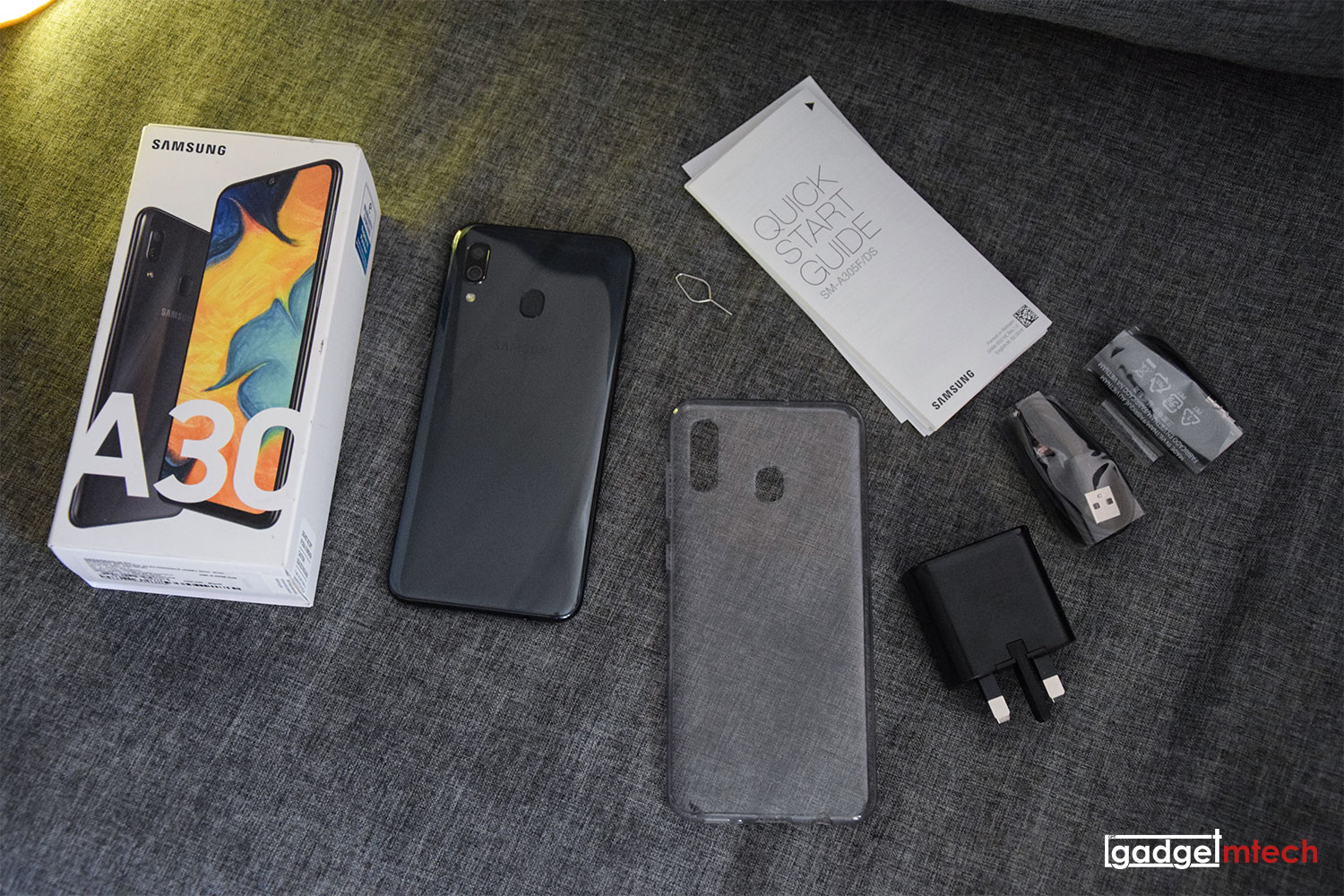
The phone comes in a simple white box, much like those old Samsung affordable devices such as the Galaxy Y. The box consists:
- Samsung Galaxy A30
- TPU case
- SIM ejector tool
- Quick start guide
- Fast charging wall brick
- USB-C cable
- Earphones
Design
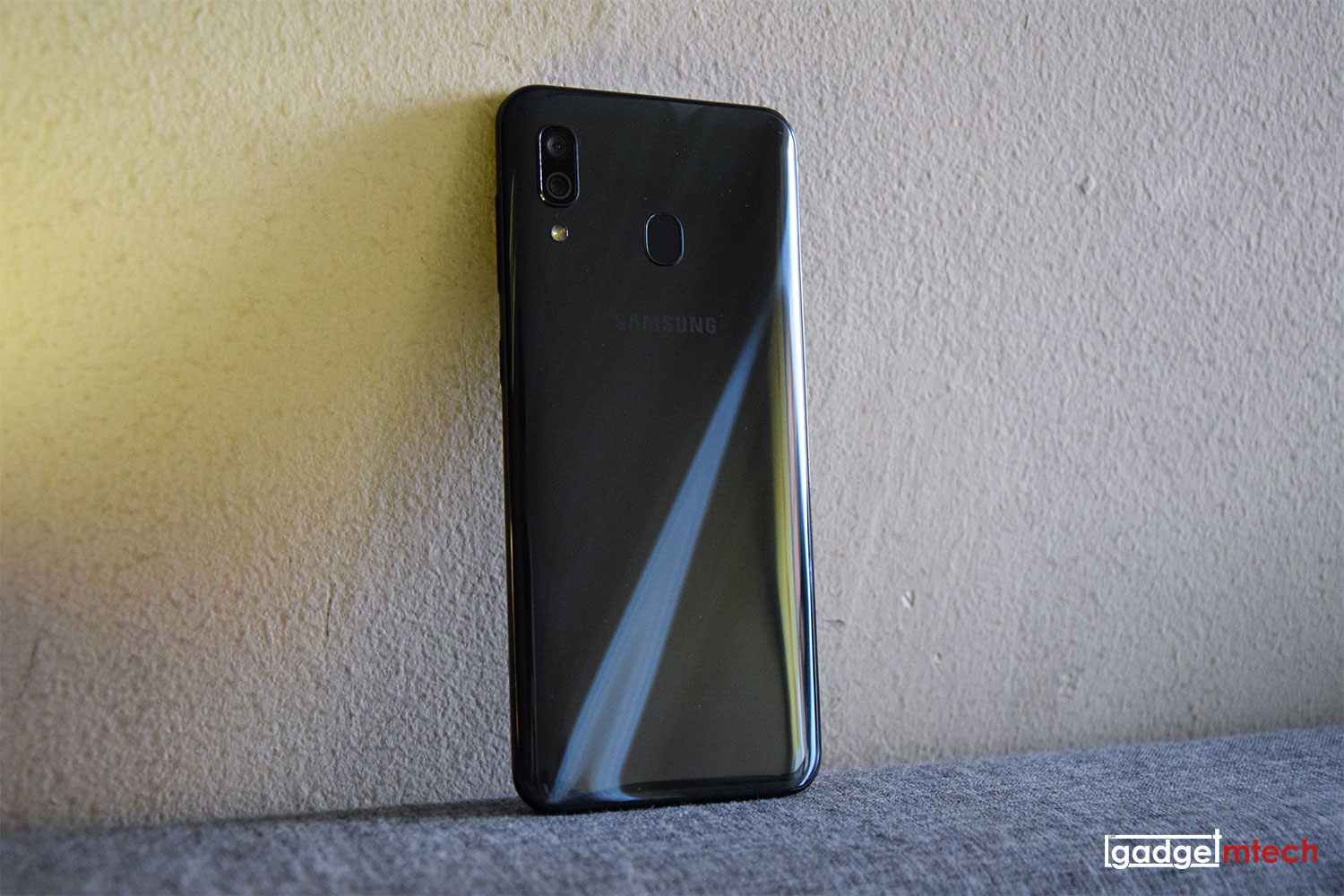
The Galaxy A30 has a glass-sandwich design, the back one is actually an acrylic glass, Samsung calls it glasstic. It will actually show different patterns depending on which angle the light reflects. The phone is pretty nice to hold thanks to its compact size and the sleek curves on the back.
The front of the phone has the 6.4-inch Infinity-U display, more about the display later. It has a tiny earpiece and the bottom chin of the phone is quite thick, probably to avoid adding the cost to flex the AMOLED panel.
The bottom of the phone houses the 3.5mm audio jack, USB-C port, microphone, and mono speaker. Yes, you get the USB-C port on a budget smartphone! The back of the phone has the dual-camera setup and a fingerprint sensor. The fingerprint sensor works pretty well, which also supports swipe to open the notification panel, but it’s slower than the rivals.
Display
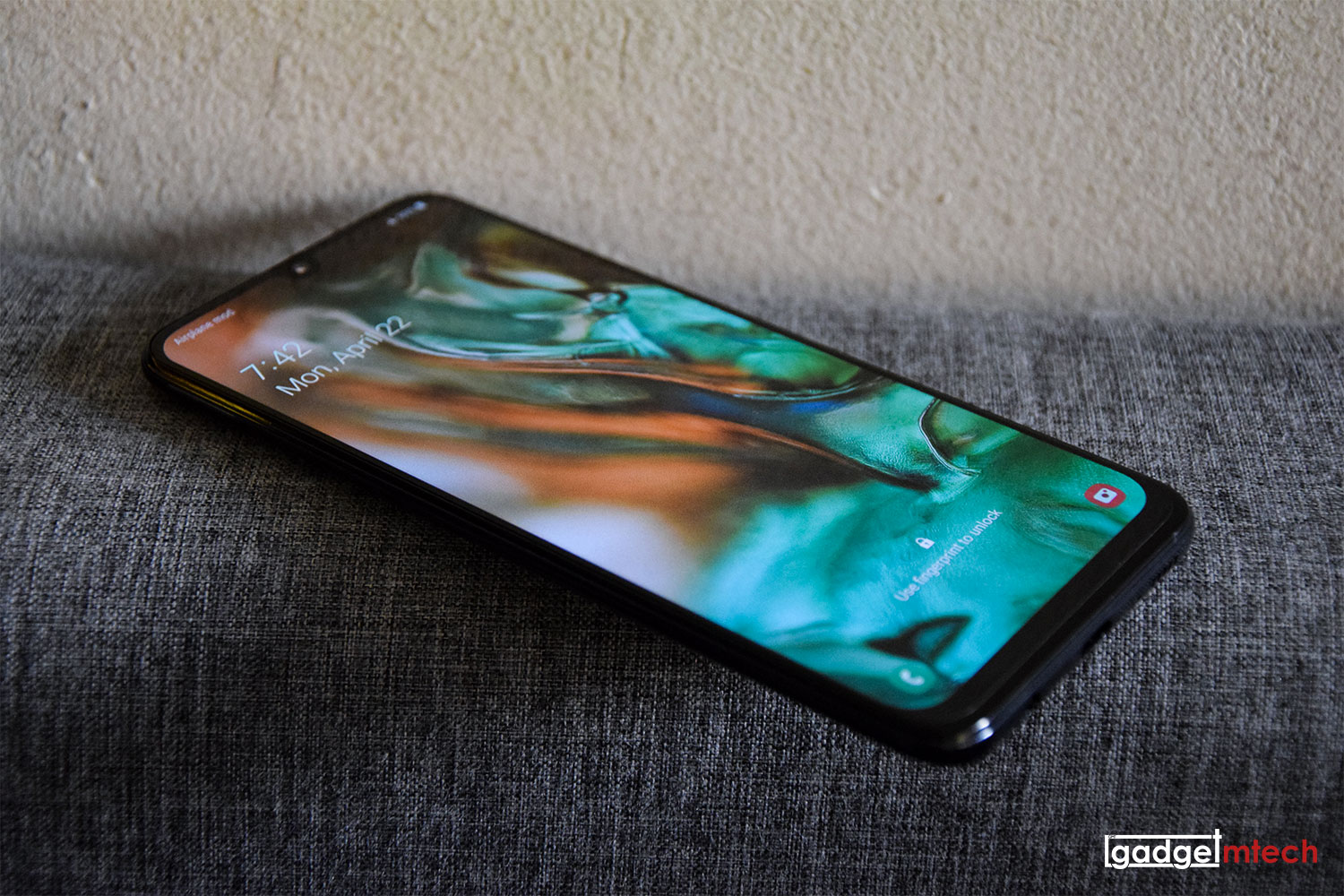
The phone sports a 6.4-inch Full HD+ Super AMOLED Infinity-U display, basically a dewdrop notch like many other Android smartphones. What really surprised me was Samsung actually using an AMOLED panel, despite just an affordable mid-range device. As usual, it does what it is best at, showing nice and vivid colors, making it a phone with a good viewing experience.
Performance
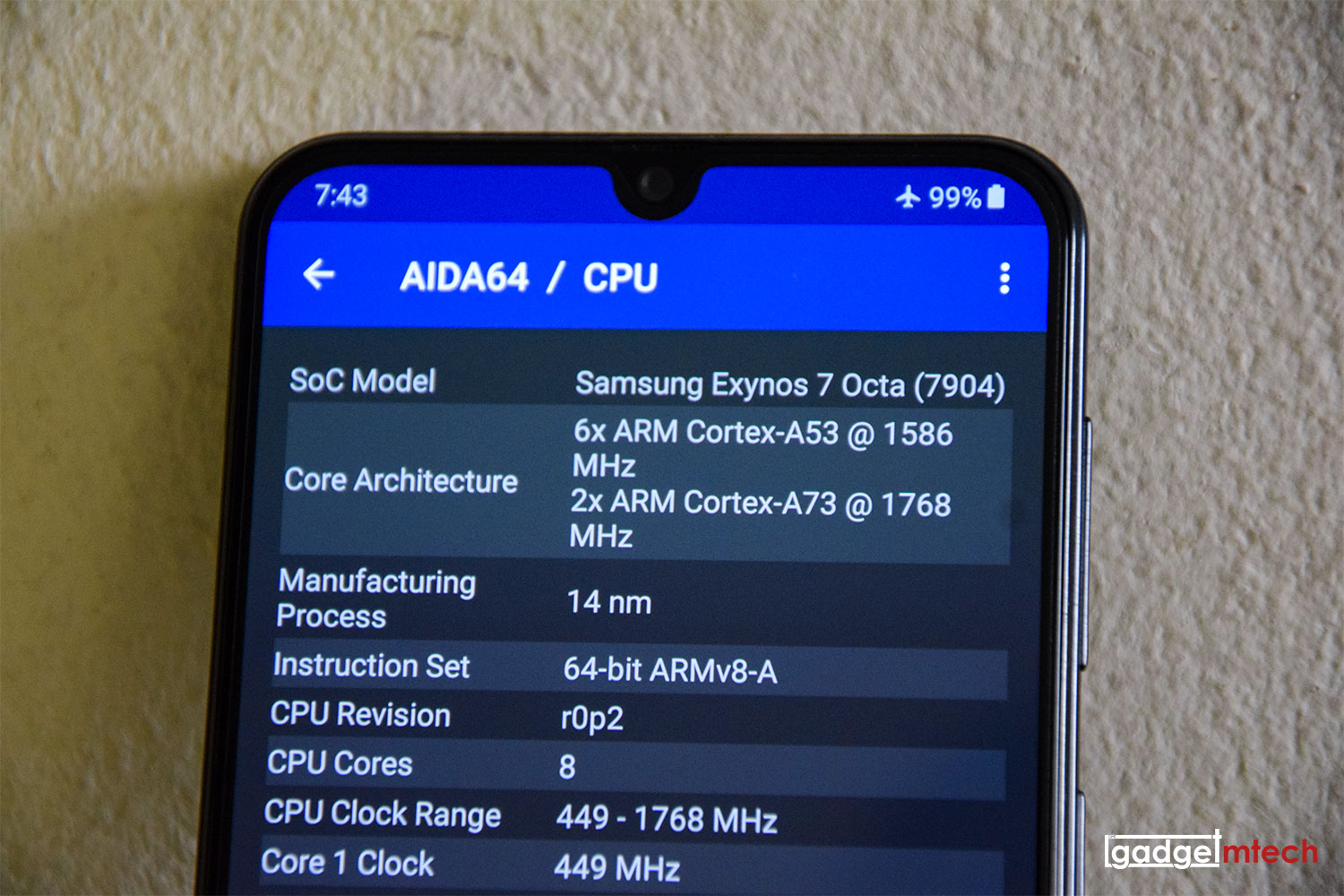
The Galaxy A30 is powered by the company’s own Exynos 7904 processor with 4GB RAM and 64GB expandable storage. The phone actually performs quite well on a daily basis such as web browsing, playing games, watching videos, etc. The Exynos 7904 chipset is actually on par with Snapdragon 636. However, you can get a phone with the Snapdragon 660 SoC for just a little bit more. By the way, its single mono speaker below has a crappy sound quality, you are better off with earphones connected for a better audio experience.
Software
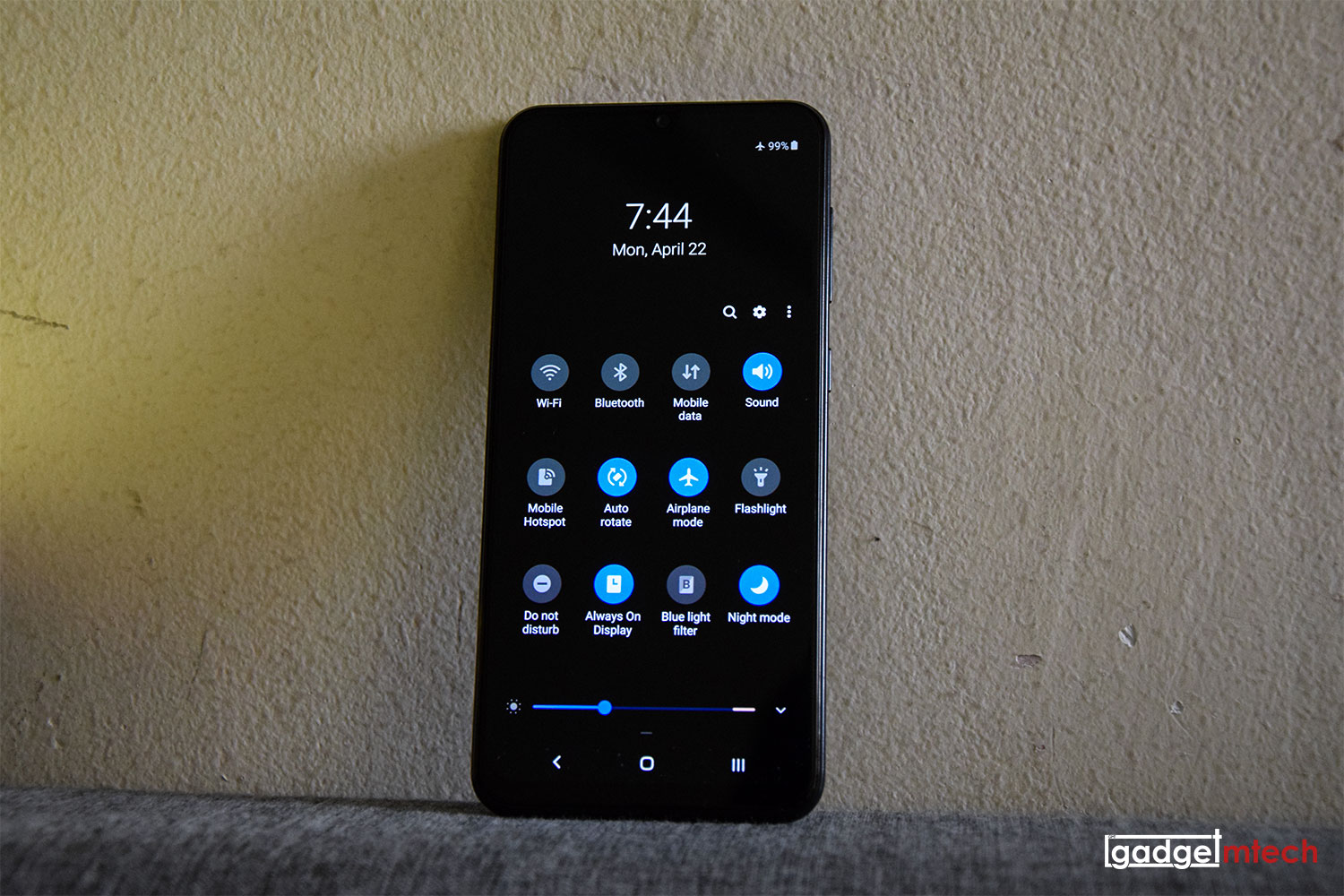
The phone runs on Samsung One UI on top of Android 9.0 Pie. Compared to the previous UI, I must say that One UI is the best user experience that Samsung ever made. It is simple without any bloatware, and Samsung has moved the tabs to the bottom where it’s easier to reach. Additionally, it also comes with Night mode (dark theme), which utilizes the AMOLED panel to conserve the battery.
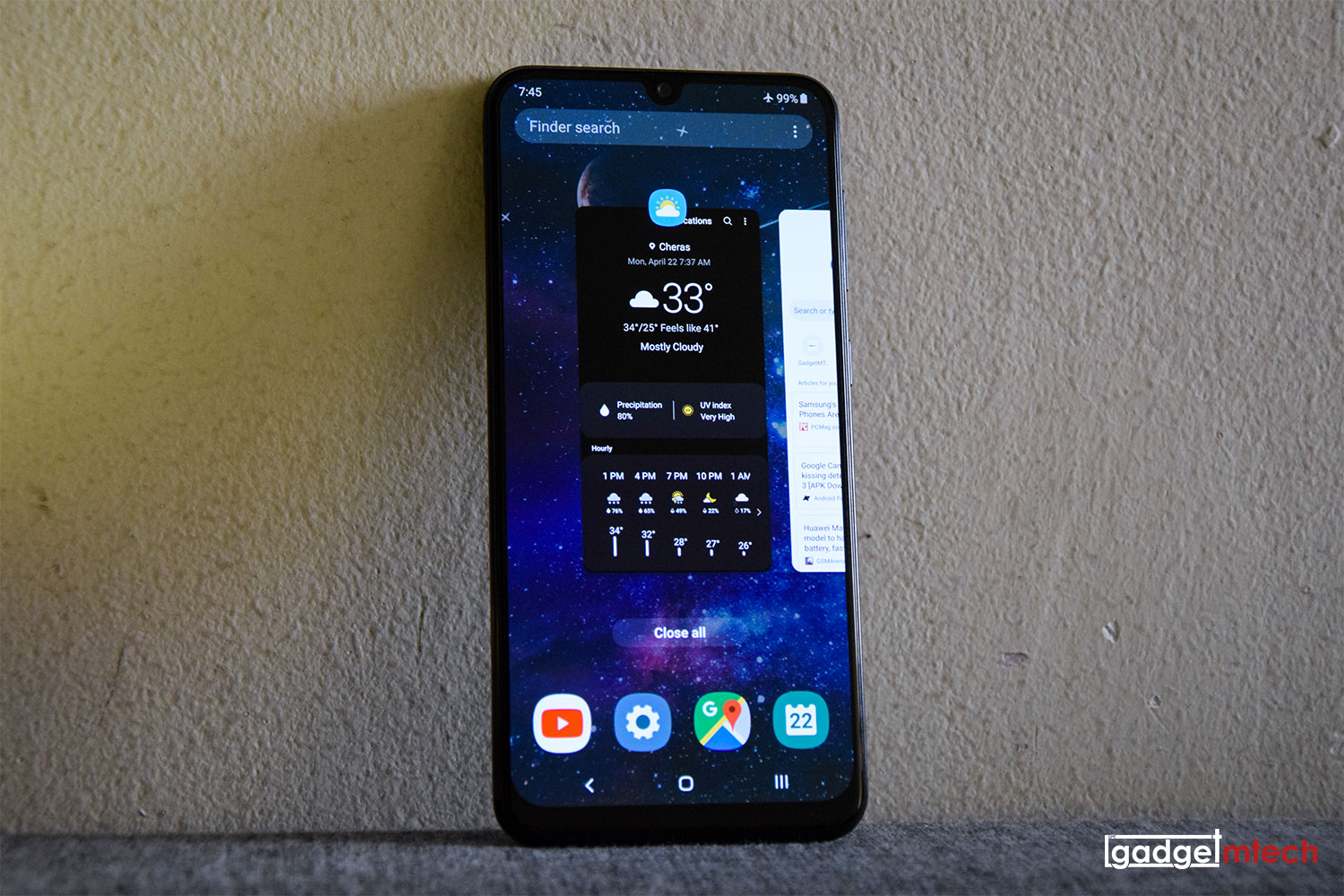
Overall, One UI is better than before, though I think that the app icons are a little bit cartoonish. Small issues like opening the phone settings would take longer than usual is probably caused by the slightly less powerful hardware, I have no issue when using the Galaxy S10+.
Camera

The Galaxy A30 packs a 16MP + 5MP dual-camera setup on the back, the secondary 5MP camera is actually an ultra-wide angle lens. Selfie wise, there’s a 16MP front-facing shooter.
Image quality generally is quite okay for a mid-range device, though most images tend to be oversharpening in broad daylight. The phone has a great dynamic range, and it even supports auto HDR, not every mid-range phone got this feature. The secondary 5MP ultra-wide angle lens takes great photos too, though the color temperature tends to be on the warmer side.
Battery
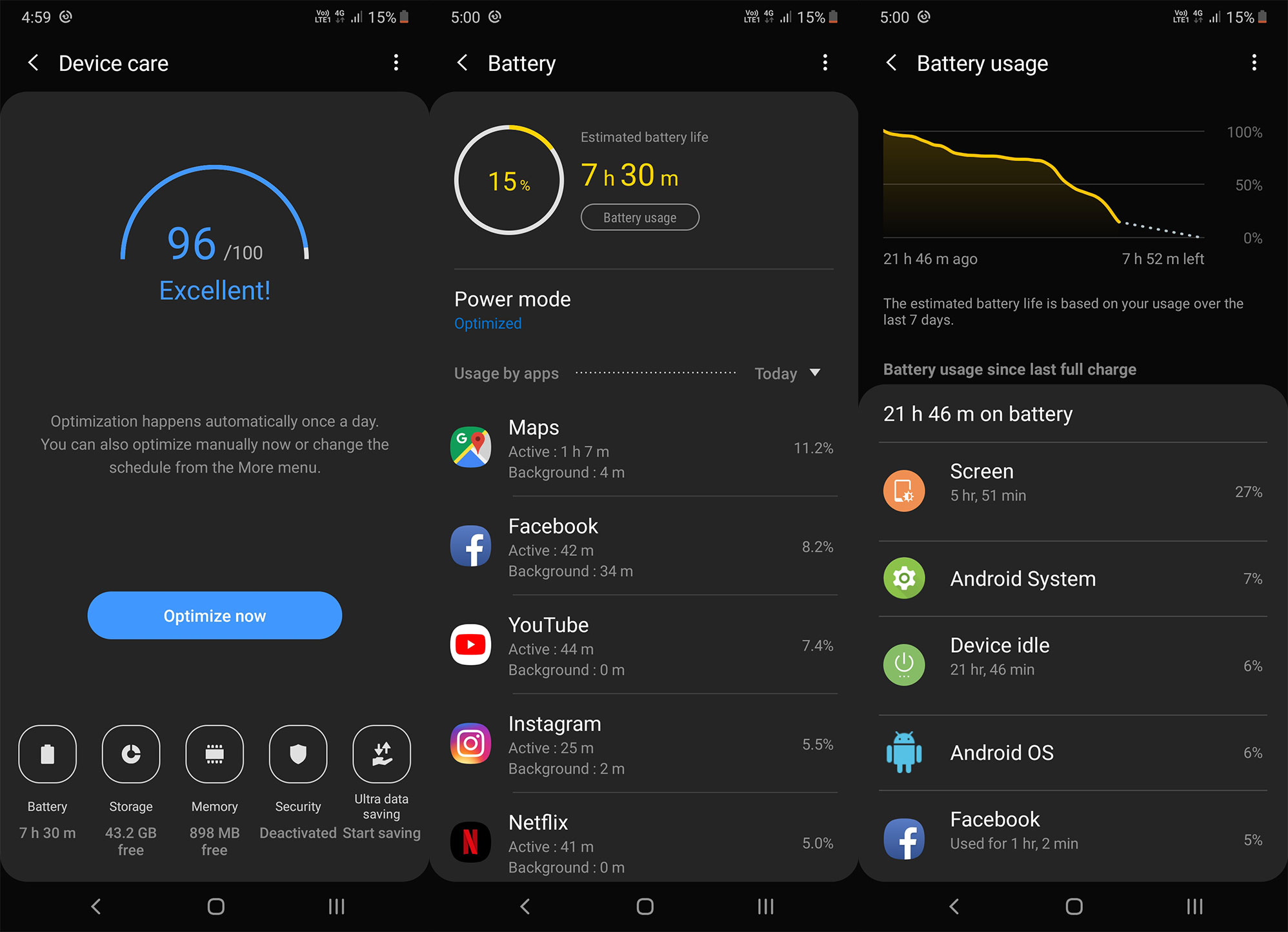
Here comes another selling point of the Galaxy A30 — the battery. It has a 4,000mAh battery that supports 15W fast charging. Based on my usage, I was able to get through a day easily with around 6 hours of screen-on-time. The combination of the Super AMOLED screen and Exynos 7904 SoC really did help a lot in terms of conserving the battery.
Final Words
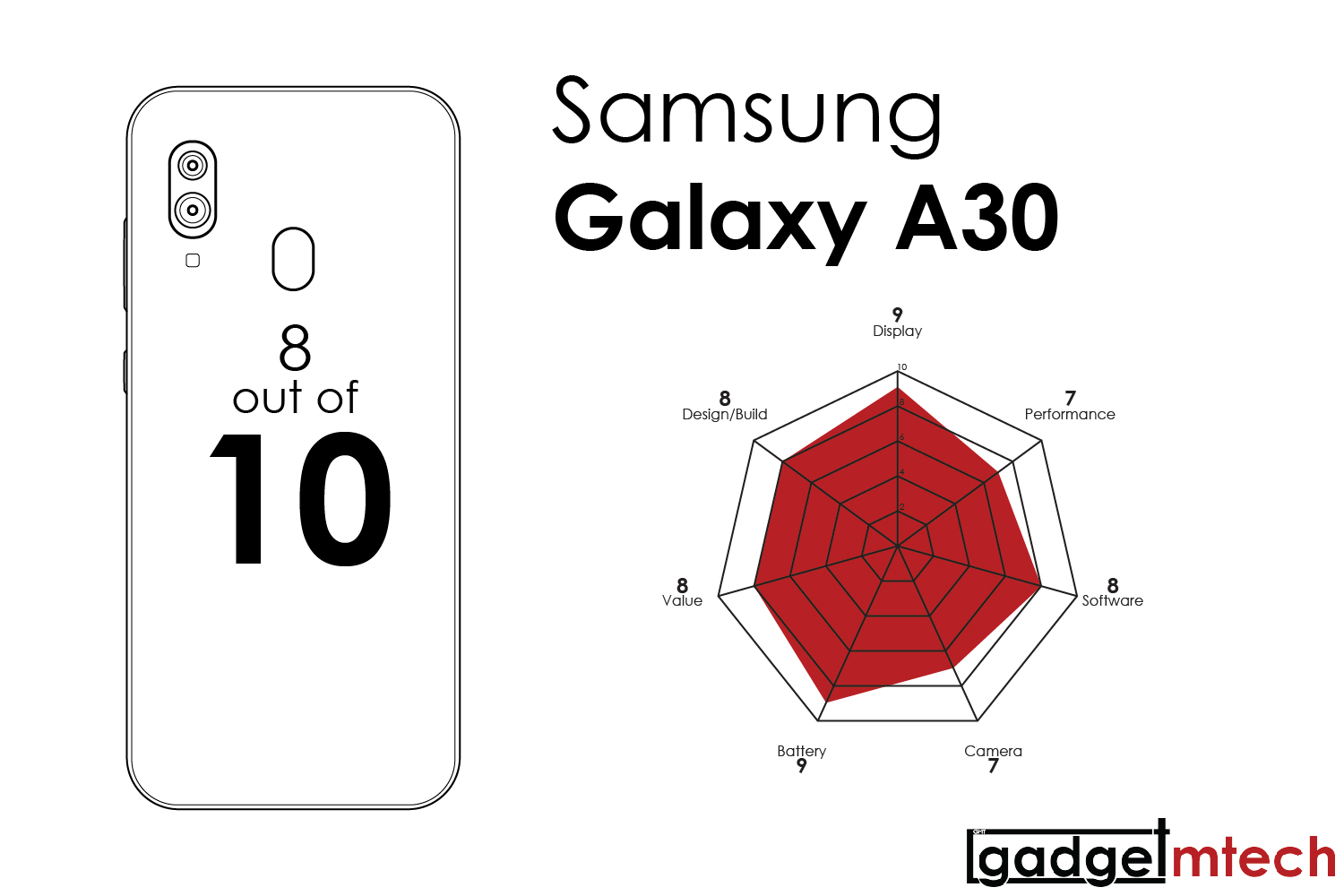
Retailing at RM799, the Galaxy A30 is a pretty different mid-range device. Most phone makers chose to emphasize on the hardware performance when it comes to making an affordable mid-range device. What Samsung did is different, the company decided to put a top-class display on its mid-ranger, while sacrificed the overall performance of the phone. Surely, the screen is a pleasure to view, but if I were to choose, I would pick performance over screen quality. After all, all phones have tiny screens.
Yay
- Sleek and slim design
- USB-C port with 15W fast charging
- Awesome Super AMOLED screen
Nay
- Slow fingerprint sensor
- Less powerful performance
- Price can be slightly lower

